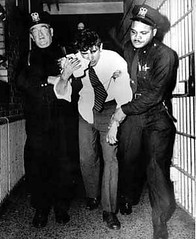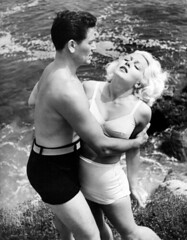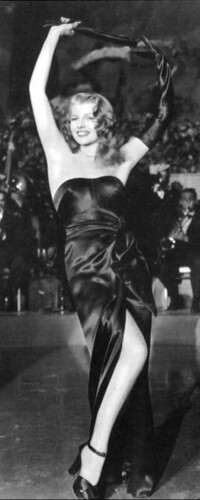Sun 21 Mar, 2010
Lipstick Causes Murder?
Comments (0) Filed under: LipstickTags: 1940s, 1946, Cecil Kellaway, film noir, James M. Cain, John Garfield, Lana Turner, Lipstick Killer, murder, The Postman Always Rings Twice, William Heirens

Lipstick is a wonderfully versatile cosmetic. For many women it is the one beauty item they’d take with them if stranded on a desert island. I know that it would be my choice.

William Heirens
But, as we’ve seen over the past couple of posts, lipstick can be a trouble maker. It casts a spell on some men which lures them into liaisons with women other than their wives. It leaves tell-tale traces on clothing and skin, and lingers provocatively on cigarettes smoldering in an ashtray, or imprinted on a cocktail glass — so much power in such a little tube. Is it possible that lipstick may drive men’s passions with a force so great that it may culminate in murder?
Take the 1946 case of William Heirens. It was alleged that between June 1945 and January 1946 the 17 year old had murdered two women, and murdered and dismembered a little girl. At the scene of the second murder, that of Frances Brown a former U.S. Navy WAV, there was message from the killer scrawled in the victim’s lipstick. 
The Chicago press dubbed the fiend “The Lipstick Killer”, and residents of the city spent several nerve jangling months until William Heirens was arrested and they breathed a collective sigh of relief.
But did Heirens commit the murders, or was the teenager coerced into confessing by hard nosed Chicago cops desperate to make an arrest?
Sixty-four years later Bill Heirens is still alive, and still in prison. At 81 years of age he is considered to be the longest serving prisoner in Illinois state history, and it seems that he may die there. Death in an Illinois prison would be justice if he is guilty, but if he is innocent…
There have been many other crimes in which lipstick was used to scrawl a message on a nearby surface, or even on the body of the victim. It doesn’t matter what words are used, or if the message consists only of cryptic symbols – there is something about the act of using lipstick that makes a compelling and strangely intimate statement.
 My favorite lipstick as a portent of evil moment comes in a scene from the 1946 film noir “The Postman Always Rings Twice” . Frank (John Garfield) has just arrived at a small cafe. He’s a drifter and is considering responding to the “Man Wanted” sign outside when he’s greeted by the cafe’s owner, Nick (Cecil Kellaway), and urged to come in for a burger. Nick tosses a burger on the grill behind the counter, but is called away for a minute to pump gas at the station outside.
My favorite lipstick as a portent of evil moment comes in a scene from the 1946 film noir “The Postman Always Rings Twice” . Frank (John Garfield) has just arrived at a small cafe. He’s a drifter and is considering responding to the “Man Wanted” sign outside when he’s greeted by the cafe’s owner, Nick (Cecil Kellaway), and urged to come in for a burger. Nick tosses a burger on the grill behind the counter, but is called away for a minute to pump gas at the station outside.
As Frank waits at the counter he hears something drop to the floor, and observes a tube of lipstick rolling toward him. As he stoops to pick it up he notices white open-toed pumps at the ends of two extremely shapely legs. The dame wearing the pumps is also wearing white shorts, a white cropped top, and is a blonde. The blonde is holding a compact and powdering her nose. Frank has just met Nick’s young wife Cora (Lana Turner). The tension between the two is palpable. Their eyes meet and they immediately engage in a power play. It’s obvious from Cora’s demeanor that she is a woman who is accustomed to getting the attention of men, and having them do her bidding. She waits for Frank to bring her lipstick to her, but he doesn’t budge. Which of them will acquiesce to the other?
As you’ve seen, Cora finally gives in. But that’s just in the short run – in the long run the breathtaking blonde convinces the drifter to commit murder. It is a perfect noir moment, made all the better in my book because a tube of lipstick is the catalyst.
A lipstick tube introduced Frank and Cora, and it comes full circle with Cora’s death – just as Cora is promising Frank that they’ll share many kisses that “come from life”.
Ladies, when you apply your lipstick the next time you may wish to pause and to reflect upon the power implicit in such a simple act.




